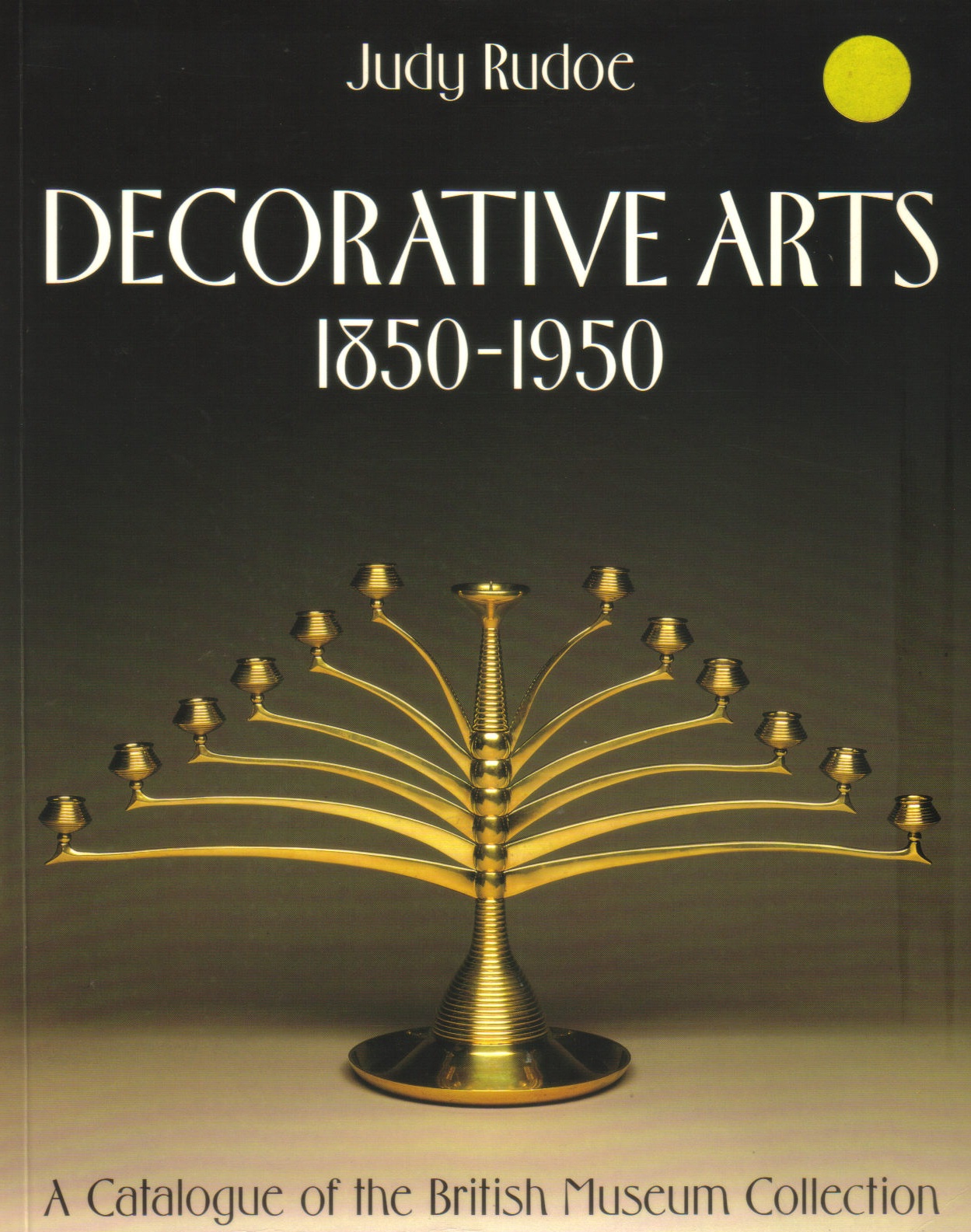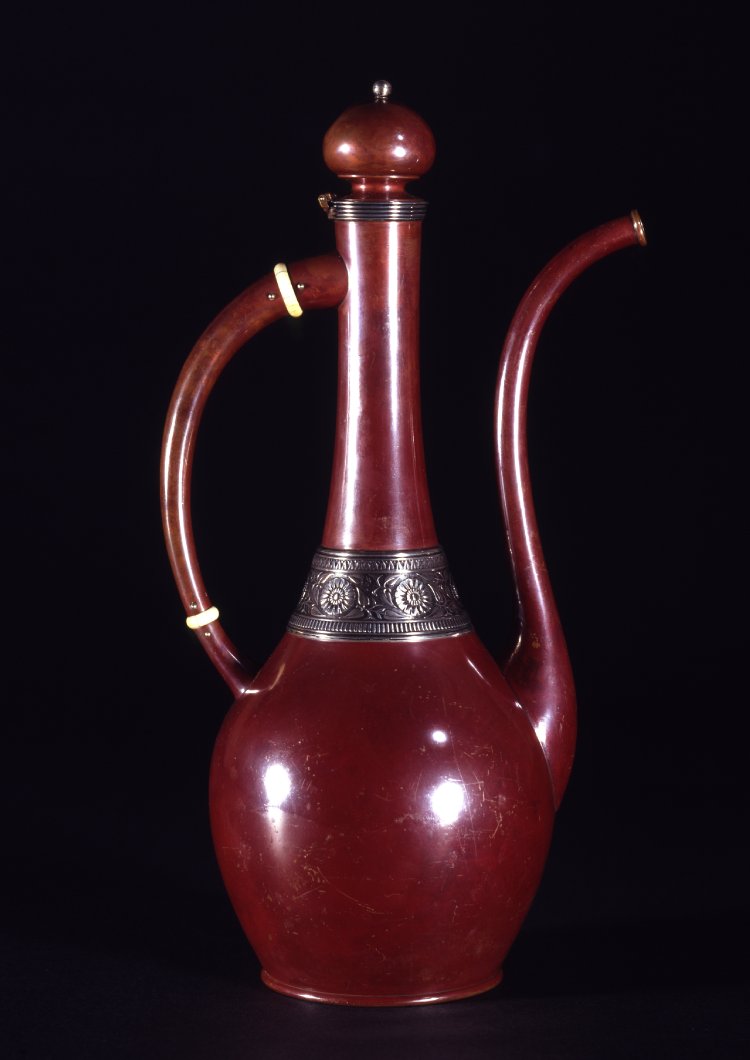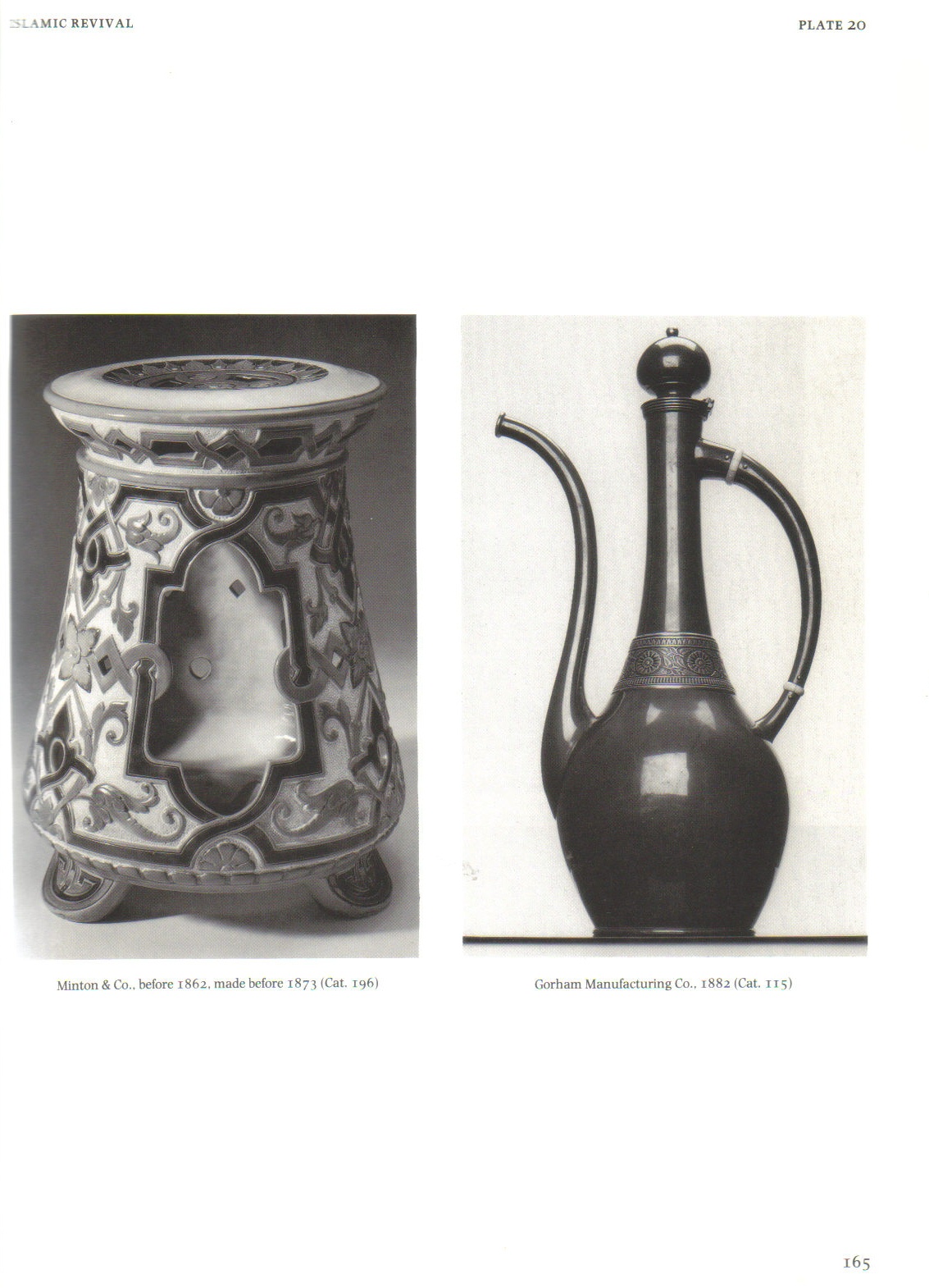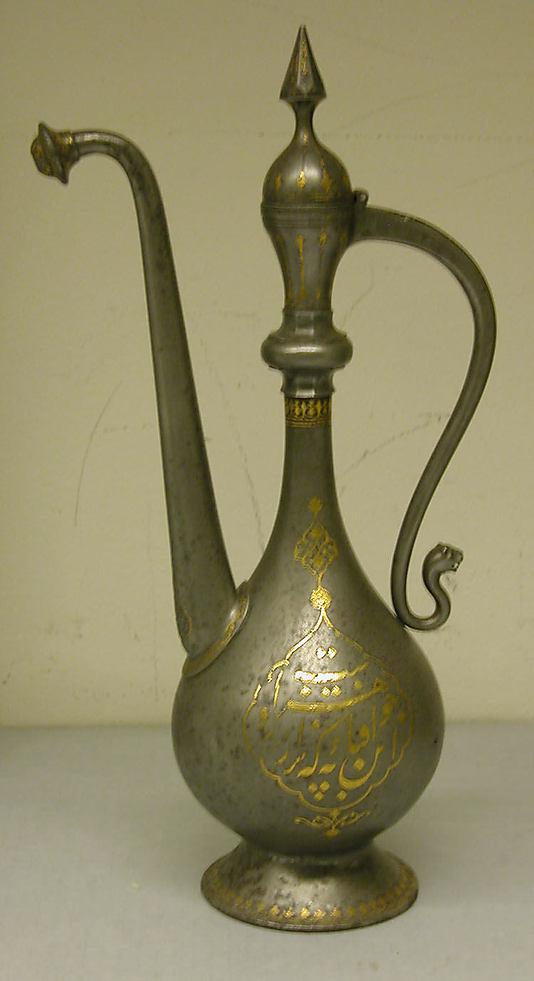13 in (33 cm) high
cf. Judy Rudoe, Decorative Arts 1850-1950: A Catalogue of the British Museum Collection, 1994, p.165, pl.20
C.H. Jr. Carpenter, Gorham Silver 1831-1981, 1982, p.113
Gorham’s copper line was introduced in 1881 and was produced for only a few years, until about 1885. The production was very limited partly due to the amount of hand labour involved. The taste for coloured metals in the Japanese manner was developed to a far greater extent in America than in Europe, and became almost a hallmark of American metalwork of the Aesthetic Movement. The coloured metals were either inlaid and applied or patinated. The patinated wares, with their rich red tones, are probably inspired by Japanese lacquered wood rather than metalwares. The tall coffee pot with its graceful spout was a favourite Gorham form, based on contemporary Turkish or Persian models. This model was also made in plain copper, with the silver appliques, and in solid silver.
The Jewelers’ Circular and Horological Review from January 1882 printed a lengthy description of the new copper wares, including ‘a pot for black after-dinner coffee of silver in purest Persian shape’. The American metalwork shown at the Exposition des Beaux-Arts in Paris in 1884 included a teapot ‘en cuivre auquel on donne par un oxyde une patine rouge vernie très etrange’ (La Revue des Arts Décoratifs, 1884, p.117). The makers are not specified, but it is likely that this refers to a Gorham piece.
A similar version of this coffee pot is held in the collections of the British Museum.



















